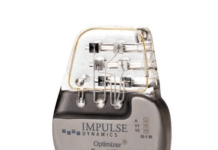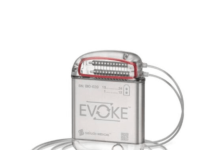The research targets people with complex regional pain syndrome, post-stroke pain, and other pain-induced conditions.
Japanese medical device maker Jolly Good and the Pain Center at the Aichi Medical University Hospital will conduct a study on the efficacy of virtual reality-based therapy for chronic pain.
It was in April last year that Jolly Good set up its digital therapeutics division, which involves a team of psychiatrists, pharmaceutical strategy specialists, and other DTx specialists. Through this, the company is expanding to cover multiple mental illnesses and lifestyle-related diseases. Jolly Good has been known for providing VR for medical training.
The Aichi Medical Hospital University’s Pain Centre is an interdisciplinary pain treatment and research facility that is guided by the principle of addressing pain management beyond the boundaries of disciplines. The centre also works on clarifying basic pain mechanisms and developing treatments.
In a press statement, the companies said they will conduct “multifaceted research on the use of VR in diverse situations… to develop VR therapy for chronic pain”. The first phase of their research involves looking into the development of rehabilitation therapy using VR, targeting people with complex regional pain syndrome, post-stroke pain, and other pain-induced conditions.
WHY IT MATTERS
Takahiro Ushida, a professor at the Pain Center, notes that while it is essential to determine the source and treatment for pain, chronic cases are “complicated”. A vicious cycle – from experiencing pain and anxiety to lifestyle change and worsening of pain – causes “negative” experiences that sit deep in a patient’s mind and body, “greatly” strengthening the symptoms, he added.
To this end, the pain researchers are exploring “rehabilitation using virtual reality,” which Prof. Ushida claimed, “can induce and accumulate successful experiences [that] could improve physical condition and pain”.
MARKET SNAPSHOT
In the US, there is already a digital therapeutic system available on the market for treating chronic pain. One such device is the EaseVRx by AppliedVR. Last month, the VR DTx maker received a de novo clearance from the Food and Drugs Administration to sell its product for treating chronic lower back pain. The prescription device includes a VR headset and controller, as well as a breathing amplifier that is used for deep breathing training. There are also 56 VR sessions of cognitive behavioural therapy that users can enrol in, which offer content such as breathing exercises and mindfulness.
While VR is an appealing alternative to existing pain management approaches, its adoption remains a challenge, especially for treating diverse populations. A study by S.O.L.V.E. Health Tech and AppliedVR published this year pointed out that VR’s integration into complex workflows, structural costs and reimbursement were top concerns for its implementation and scale of use.
Are you hiring?






